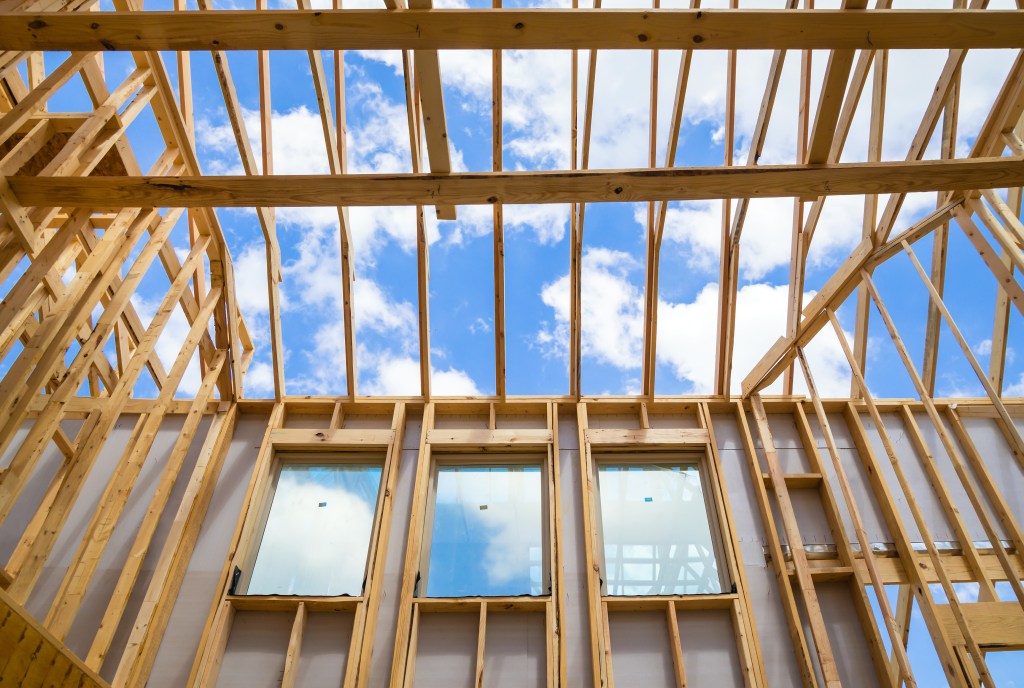The President’s new tariffs and the potential chain reaction of retaliatory counter punches your research shows now may be the No. 1 cause of agita and sleep loss. You anxiously run the numbers on how they’ll hit pricing, not only on steel and aluminum, but whatever other materials get swept into a vortex of a global trade war. What’s more the way tariffs work, they very often raise the price of materials and products produced here. How bad that could get!
Wait a few hours.
By then, it might be growing angst about the impact of wage inflation and other price pressures on mortgage interest rates that leapfrogs back into the topmost position on builders’ wall of worry. Interest rates impact monthly payments and psyche, both of potential buyers and potential sellers who might look at their current dirt-cheap mortgage rate and say why sell.
But wait again.
A slew of uncharacteristic [once upon a time] late winter-early Spring storms could volley through the land, wrecking slab-pouring, rough-framing, and roofing schedules, wreaking havoc on what looked only weeks ago like a tight but reasonably sane management of trade crews at your job sites. Big bad case of “what keeps you up at night,” no?
Right, once again, count to 10.
Then, in comes the next set of survey research, right around the time state and local taxes and property tax bills–stripped of their former deductible selves–are due for payment. There goes buyer confidence, and mortgage interest tax deductions on more expensive places no longer pack the motivating punch they used to to boot. Worry.
Think the litany of forces that could instantly spike costs, send labor capacity into chaos, slam potential home buyer pocketbooks, or otherwise impair demand is done yet? Nope.
How about the fact that multiple bidders are all over almost every tract of property that hits the open market? What happens when current lot supplies need reinforcement sites to keep feeding the machine? Moreover, the local regulatory pressure keeps mounting, adding costs, adding time, adding the need for undaunted, ferocious persistence. Availability of lots for prices that will pencil could easily rise up as a builder’s biggest nightmare.
Fact is, in short order, the pain point of the moment could be any single one of these five challenges, or a combination of several.
Or, as much as they may cause high anxiety, it’s plausible that one of them, or all of them combined may not derail a housing recovery that, up to now, has been modest at best, except for the upper tiers of house prices.
It’s been a recovery of heavily managed expectations from the start.
Yet, if all we had were newspapers or web sites to tell us what is going on in the housing marketplace, we might believe that the past several years have been break-out recovery and that there are already signs this Spring of all that coming undone.
Wall Street Journal articles on consecutive days this week have been hammering home how risk-prone and vulnerable the housing recovery is, given the somewhat stiffening headwinds of rising mortgage rates, tax reform negatives, tariff effects, labor capacity dislocation, and no end of bad weather that can dampen demand and add cost and time to supply.
In one of the WSJ pieces, we see sheer speculation on the one hand, and then misinterpretation springing directly from those assumptions and guesses.
With sales volumes expected to be lackluster this year, the relentless price increases of the past few years could lose some steam. That could present opportunities for hardy buyers willing to brave rising interest rates, but make it slightly more difficult for sellers in some pricey markets.
“It’s still going to be a tight market, but we’re moving from an extremely tight market to one that has some wiggle room around the edges for buyers,” said Daren Blomquist, a senior vice president at the housing-research firm Attom Data Solutions.
Lawrence Yun, chief economist at the National Association of Realtors, said he expects sales to be flat this spring from a year earlier. About 2.06 million homes were sold between March and June 2017, up from about 2 million in the same period a year earlier, according to the National Association of Realtors.
New residential development and construction’s relationship to existing home sales since the early part of this recovery has languished, creating a wider than historical gap between new and existing home sales volume. Fact is, home buyer behavior will either flinch in the face of these obstacles or they will barrel through them. It’s too early to say.
We think–based on the talk track we’re picking up from builders around the country–that gap may begin to narrow by the end of this Spring.
Why?
For all the well-documented pain points du jour, people want homes, and now, more new homes are going to fit their means than has been the case at least since the First Time Buyer Tax Credit programs of 2009 and 2010.
The real risk of these negative headlines occurs if builders start to believe them. One of the keys, of course, to a continuing recovery is jobs and what they pay.



